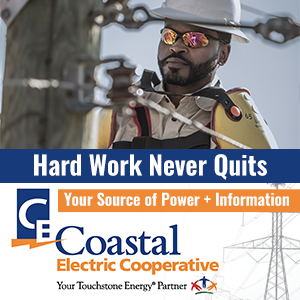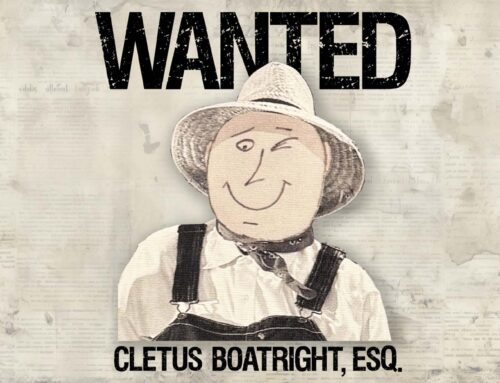
2 Friends. 1 Boat.
…and a Labor of Love
WORDS BY BEN MERRILL PHOTOS BY PAIGE GLAZER
SUMMER 2022
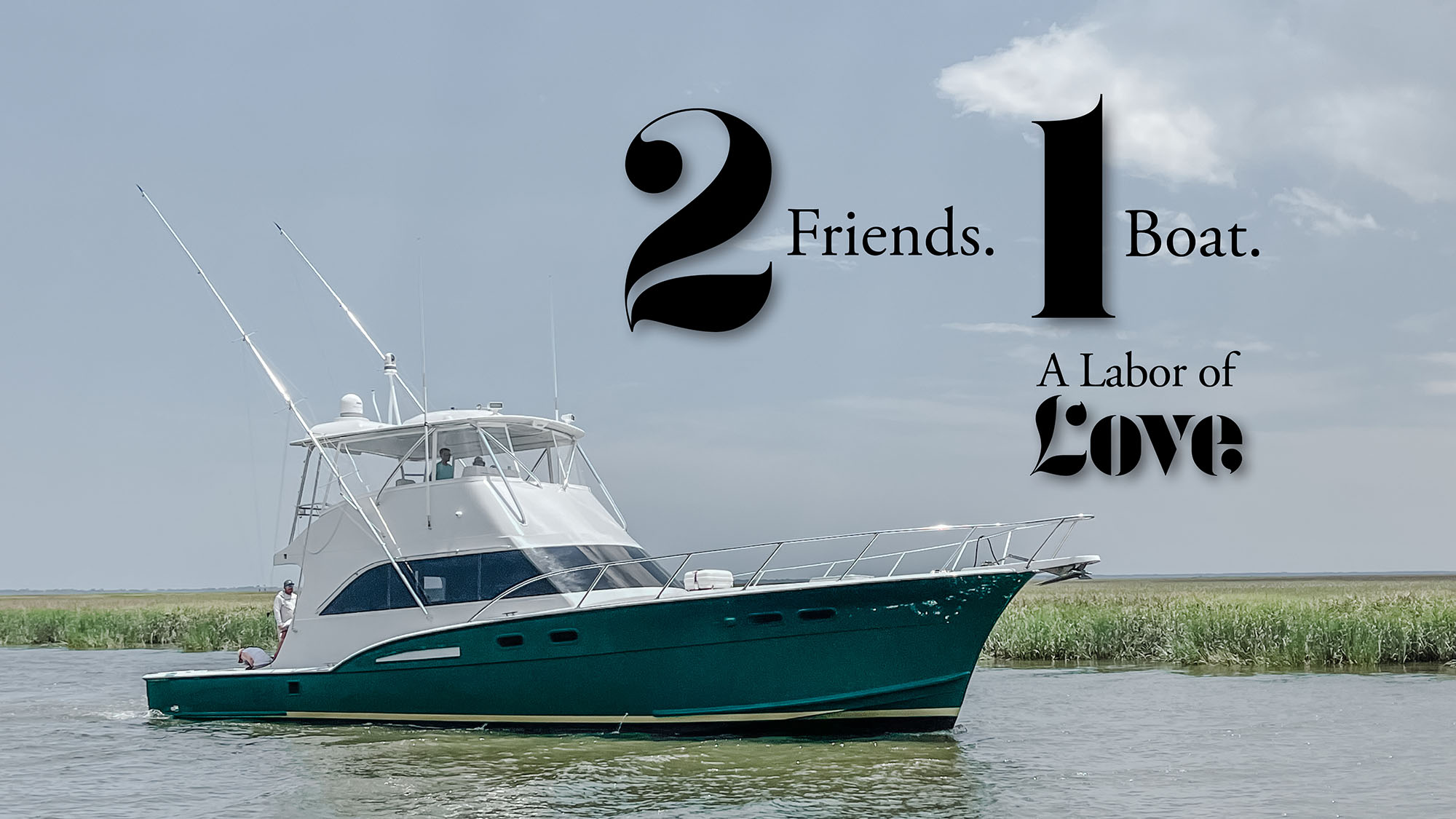
Ben MacMillan and Dr. Wallace E. Holland Jr. (Dr. Wally) each found their way to Richmond Hill when there was little more than a blinking traffic light at the Crossroads – a.k.a. Ford and 17; a couple of single lane roads; and vast acres of tangled woodland. Ben came from Isle of Hope in order to enroll his kids in The Hill’s already fine schools. Dr. Wally was hunting wild hog and got lost somewhere out in those tangled woods. “I popped out on the Belfast Keller Road,” he says, “and I decided to stay.”
While Ben’s story is a little more believable, both men claim to have made Richmond Hill their home long before it turned into the fastest growing city in Georgia, and both have no plans to go anywhere. So what ties them here other than family, a 40-plus year friendship, and roots that (now) go deeper than a live oak? The answer is docked down on the Lincoln River.
“We’ve shared an awful lot over the years,” says Ben, nodding towards his friend and longtime personal physician, “a lot of laughs, a lot of good times, even a few tears.”
“When you think about it,” Wally chimes in (winking at the reporter), “there’s probably only a couple of things left that we haven’t shared. But this is a family magazine,” he adds, laughing, “so let’s talk about the boat.”
The “boat” is a Hatteras Sport Fisher commissioned in 1977 by a well-known maker of blue jeans, which was aptly named the The Jean Machine. It spent the first 10 years of its life as a sport fishing boat in Cancun, Mexico and once landed a record blue marlin at over 800 pounds. Hatteras began building fiberglass boats in 1959, and by the early 70s had earned a reputation for building the finest fiberglass hulls in the industry. (This little factoid becomes important later in the story).
“Well, the Jean Machine enjoyed a few good years down in Mexico,” Wally continues, “but then hurricane Gilbert came along and the boat was pretty heavily damaged. I was looking for a boat around that time and I found The Jean Machine sitting in the back of a South Florida marina, slowly undergoing some repairs. I’ve spent more than a little time on the ocean over the years, some of it working on charter fishing boats, so when I laid eyes on that Hatteras, I knew it was the one I wanted. It took me a little time and a little money, but I got the Jean Machine to Savannah in 1989, renamed her ‘The Dreamer’, and worked on her for the next three years, slowly bringing her back to life. By the time I launched her in 1991, I swear I’d sanded and put 20 coats of varnish on that woodwork.”
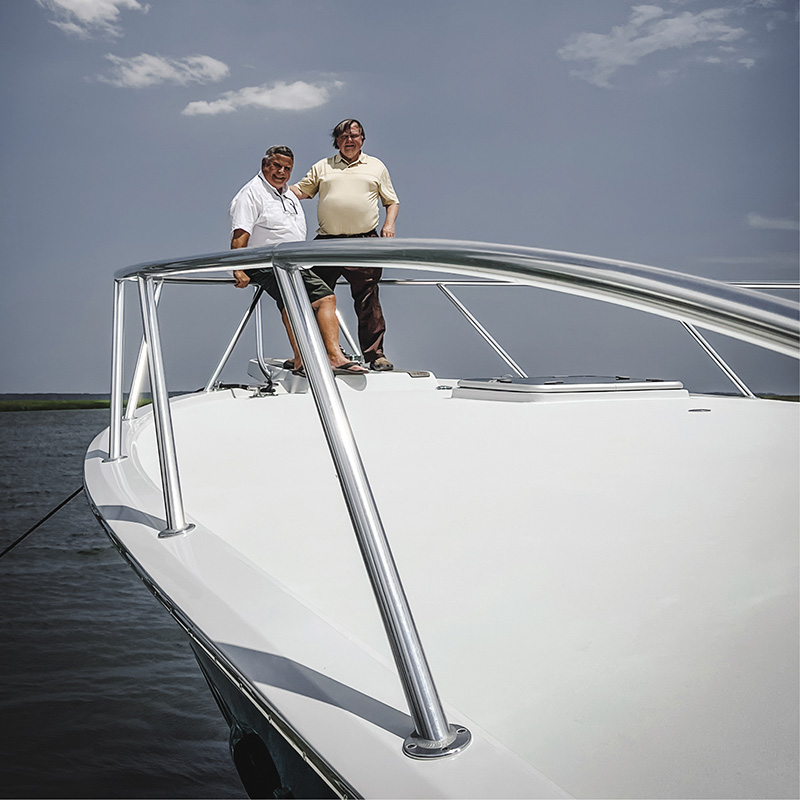
“We used to take her out to the gulf stream on weekends,” he says, “anywhere between 80 and 120 miles offshore. We’d motor down to Jacksonville, and then basically drift slowly north over the next two days, trolling and reeling in tuna, wahoo, sailfish, and mahi-mahi. By Sunday we’d be somewhere off the coast of Hilton Head, and when the sun started to go down, we’d turn the bow towards Savannah and motor home. They were wonderful weekends.”
As Wally weaves his fish tales, Ben just laughs and shakes his head. He’s heard all these stories before and he’s taken part in many of them. He just smiles, waiting for his cue to enter the conversation. But it’s not his turn yet.
“So anyway, long story short,” says Wally, “The Dreamer was hit by lightning at the Thunderbolt Marina in 1992, and it kind of put her out of commission for awhile. I was on the boat when it happened, and was practically deaf in one ear for the next month. After that, my wife and I started to have children, my practice got busier, some fairly large expenses came along, and we spent less and less time enjoying the boat. We’d play around on it now and then, but the fishing trips were fewer and farther between. Finally, the boat just sat at the dock. And it sat at that dock for the next 20 years.”
Enter Ben MacMillan. Friend, patient, and longtime associate of Dr. Wally. Ben is a busy man. Officially he is an industry contractor, overseeing a number of businesses, engineers, technicians, and operations. If you need something designed, built, moved, fixed, stored, engineered, or repaired, you want to know Ben MacMillan. Ben also likes to fish.
“About six years ago,” he says, “I was in the market for a boat. I live in one of the most beautiful areas in the country, surrounded by deep water creeks, rivers that lead to the sea, and some of the best fishing on the planet. And by 2016, I was ready to start enjoying some of it. But there was this dirty, tired, muck-covered Hatteras docked at my good friend’s pier, and I thought maybe I’d ask him about it.”
“I’ve known Ben for years,” Wally interjects. “I’ve treated his kids, taken care of his family, scolded him for his bad habits. We’ve known each other forever. Just a wonderful friend. And he comes along and wants to know about this tired old boat that’s still floating at the end of my dock. I told him he could have it for a dollar, so long as he let my son Tyler help restore it.”
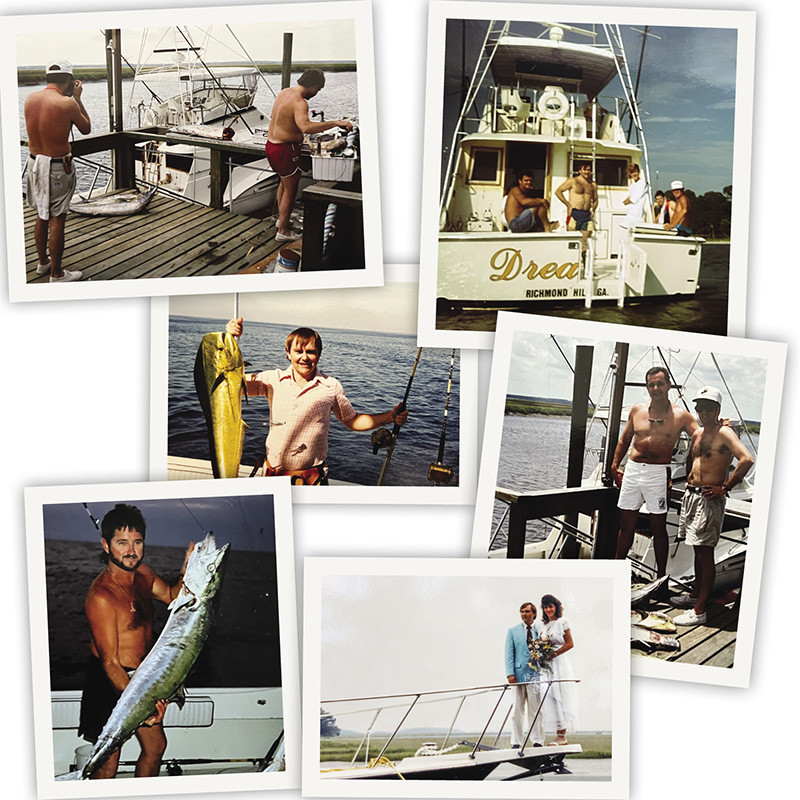
“Oh I put Tyler to work,” Ben laughs. “After sitting at that dock for 20 years, there was an entire marine ecosystem of barnacles, seagrass and muck stuck to its hull, along with a school of sheepshead and a family of otters that called The Dreamer ‘home’. When we lifted it out of the water I was afraid it was going to slip right out of the sling and plunge back into the creek. But we got it out of the river, scraped the bottom, loaded it on a trailer, and I hauled it back to my warehouse. You don’t want to know what it smelled like when that mud and grass and all those creatures living in it died. We had to get the fire department to come wash everything back into the creek.”
Then the real work – or maybe we should say the “reel” work began.
“First thing I did was rename her the ‘Reel Deal,’” Ben says, “and basically I gutted her down to her hull. Ripped everything out – engines, electronics, you name it. Now, one thing you need to know about a Hatteras boat, especially one made in the 70s, is they used the best materials and they made their hulls thicker than other manufacturers. After 20 years in the muck, once we cleaned her off, that hull looked like it was brand new. Even the two 750 hp Detroit Diesels still worked.”
Over the next five years, employing some of the best craftsmen and marine architects in the country, most notably Steve Sawyer, Ben rebuilt The Reel Deal, and in the process added a few features not found in any other ‘70s era (or current) Hatteras boats.
“We added a few feet to its length, larger engines, a wider fly bridge, a Seakeeper gyro stabilizer to eliminate rocking and swaying, a commercial grade freezer to store fish, and a number of other amenities to make her the one of a kind boat she now is,” Ben says. “We made her a 21st century marvel, and there’s nothing else like her on the water today.”
“I can’t begin to tell you how it feels to see this boat completely restored and sitting proudly at the pier,” says Wally. “I mean, Ben could have bought a brand new boat – heck, for the price of what this renovation cost he could have bought two. And he could have started reeling in fish right from day one. Instead, he helped out a friend and brought one of the finest boats ever built back to life. The only way to describe it is a labor of love.”
As one listens to, and watches, Ben and Dr. Wally tell their boat stories, one quickly begins to understand that bringing the Jean Machine; the Dreamer; the Reel Deal back to life, truly was nothing less than a labor of love…and not just for the boat.


